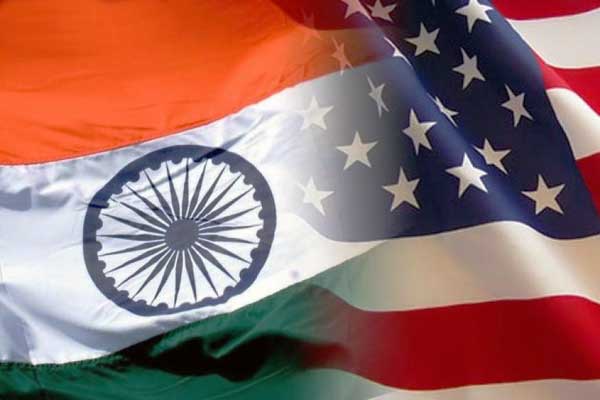IDR Blog
Cracks in Indo-US Bonhomie

It is nothing but hugely embarrassing that India and the USA have exchanged words, though only hours back their Navies were exercising side by side in what was the first edition of the La Pérouse joint exercise( April 5 to 7), initiated by France , in the Eastern Indian Ocean . The other two QUAD partners – Japan and Australia were also there. Few months earlier, November to be precise, all the Navies of the four Quad partners – India, the USA, Japan and Australia – had participated in yet another exercise, famously known as the Malabar exercise.
Despite this bonhomie, if India and the US are today talking like adversaries, then there is something wrong somewhere. It all began when the American Warship USS John Paul, belonging to US Seventh Fleet, conducting “military manoeuvres” as “freedom of navigation operations” near Lakshadweep, very much in India’s EEZ, last week , without the consent of New Delhi.
A statement of India’s Ministry of External Affairs says that “We have conveyed our concerns regarding this passage through our EEZ to the Government of U.S.A through diplomatic channels”. But US Navy is non-repentant. It has claimed that “India’s requirement of prior consent is inconsistent with international laws the freedom of navigation operations (FONOPs) was intended to challenge its excessive maritime claims”.
In an unusual move, the US Navy announced that last Wednesday it conducted a freedom of navigation operation in Indian waters without prior consent to challenge India’s “excessive maritime claims”, triggering a reaction from New Delhi on Friday evening. The Ministry of External Affairs (MEA) also contested the US Navy’s 7th Fleet statement of April 7 that the freedom of navigation operation (FONOP) by the guided-missile destroyer USS John Paul Jones “upheld the rights, freedoms, and lawful uses” of the sea recognised in international law by challenging India’s “excessive maritime claims”.
When asked about India’s reaction over the US Navy’s move, Pentagon spokesperson John Kirby on Friday said: “I can tell you is that the USS John Paul Jones, a Navy destroyer, asserted navigational rights and freedoms in the vicinity of the Republic of the Maldives by conducting innocent passage through its territorial sea in normal operations within its exclusive economic zone without requesting prior permission.”
Earlier, announcing about the operation, the statement by the 7th Fleet said, “On April 7, 2021 (local time) USS John Paul Jones (DDG 53) asserted navigational rights and freedoms approximately 130 nautical miles west of the Lakshadweep Islands, inside India’s exclusive economic zone, without requesting India’s prior consent, consistent with international law.”
In other words, while India’s stated position on the UN Convention on the Law of the Sea (UNCLOS) is that the Convention does not authorise other states to carry out in the Exclusive Economic Zone (EEZ) and on the continental shelf, military exercises or manoeuvres, in particular those involving the use of weapons or explosives, without the consent of the coastal state, the US says that it upholds the freedom of navigation and the rights and freedom and lawful uses of the sea recognised in international law.
Thus, notwithstanding their rising bonhomie, India and the United States are not prepared to alter their respective interpretations of the United Nations Convention on Laws of Sea (UNCLOS) with regard to the rights and obligations of the foreign “Maritime States” in the Exclusive Economic Zone (EEZ) of 200 nautical miles (370 kilo meters) of the “Coastal States”.
It is to be noted that this is not the first time that the two countries have clashed over their claimed rights. They had done so in March 2001. That time the United Kingdom, like the US, was also doing something similar elsewhere in India’s EEZ, much to the displeasure of New Delhi.
The then Indian Defence Minister George Fernandes had protested to the governments of the United States and Britain that their warships were conducting unauthorized operations in India’s exclusive economic zone – a US navy survey vessel, the USNS Bowditch, was detected 30 nautical miles from Nicobar Island. According to Fernandes, the vessel “indicated it was carrying out oceanographic survey operations.”
The Indian Defence Minister had also objected to the conduct of a UK Royal Navy Vessel, HMS Scott, sighted 190 nautical miles off Diu and later near Porbadnar between January 12 and 16, 2001. HMS Scott indicated it was carrying out military survey and declined to furnish any further information.
That time the US had argued that though one requires consent of the India for marine scientific research within its EEZ, naval activities that may be conducted in the EEZ beyond the territorial sea (of 12 nautical miles) are not subject to Coastal State regulation, that the Coastal Sate cannot regulate hydrographic surveys or military surveys conducted beyond its territorial sea, and that it cannot demand notification of such activities.
The differing interpretations of India and the US on the rights and obligations in the EEZ flow from the ambiguous wordings in the Article 58 of the UNCLOS that deals with EEZ (https://www.un.org/Depts/los/convention_agreements/texts/unclos/part5.htm).
It may be noted that whereas India ratified the UNCLOS in June 1995 (UNCLOS was concluded in 1982 and there are now 168 countries parties to it), the US has refused to accede to it so far. Like India observing all the rules of the nuclear non-proliferation without becoming a signatory to either the NPT or the CTBT, the US says that it respects the UNCLOS like other pertinent international laws.
Within the EEZ, the Coastal State enjoys, as allowed by the UNCLOS, sovereign rights for the purpose of “exploring, exploiting, conserving and managing” living and non-living natural resources, as well as jurisdiction over most off-shore installations and structures, marine scientific research, and the protection and preservation of the marine environment.
Coastal States do not, however, exercise sovereignty over the EEZ like they do in their territorial waters. The term “sovereign rights” in Article 56 of the UNCLOS was deliberately chosen to clearly distinguish between Coastal State’s resource rights and other limited jurisdiction in the EEZ, and Coastal State’s authority in the territorial sea where it enjoys a much broader and more comprehensive right of “sovereignty.”
Article 58 of the UNCLOS says that in the EEZ, all States enjoy high seas freedoms of “navigation and overflight . . . laying of submarine cables and pipelines, and other internationally lawful uses of the seas related to those freedoms, such as those associated with the operation of ships, aircraft and submarine cables and pipelines, and [which are] compatible with the other provisions of the Convention.”
These “other internationally lawful uses of the seas” in the Article 58 have led to a grey area which is interpreted by the countries like the United States which quote some other “pertinent international laws” to say that the aforesaid activities may be undertaken without Coastal State notice or consent and that these activities include a broad range of military activities such as “ intelligence, surveillance and reconnaissance (ISR) operations; military marine data collection and naval oceanographic surveys; war games and military exercises; bunkering and underway replenishment; testing and use of weapons; aircraft carrier flight operations and submarine operations; acoustic and sonar operations; naval control and protection of shipping; establishment and maintenance of military-related artificial installations; ballistic missile defense operations and ballistic missile test support; maritime interdiction operations (e.g., visit, board, search and seizure); conventional and ballistic missile testing; belligerent rights in naval warfare (e.g., right of visit and search); strategic arms control verification; maritime security operations (e.g., counter-terrorism and counter-proliferation); and sea control”.
However, countries like India (and 29 others like Bangladesh, Brazil, Myanmar, China, Indonesia, Iran, Kenya, Malaysia, Maldives, Mauritius, North Korea, Pakistan, the Philippines, Portugal, Syria, Thailand, Uruguay and Vietnam) purport to regulate or prohibit foreign military activities in the EEZ by saying that the whole spirit behind the UNCLOS, particularly the Article 88, is that “The high seas shall be reserved for peaceful purposes.”
They also say that the Article 58, which preserves the freedom of navigation and overflight and of the laying of submarine cables and pipelines etc. for the maritime States, also underlines that these rights must be exercised with “due regard to the rights and duties of the Coastal State,” and foreign Maritime States “shall comply with the laws and regulations adopted by the Coastal State in accordance with the provisions of this Convention and other rules of international law in so far as they are not incompatible with Part V of the Convention that deals with EEZ.”
It seems that this divergence in the perspective concerning the legality of foreign military activities in the EEZ between countries like India on the one hand and the USA on the other is not being bridged because of the changing geopolitical factors. Rapid pace of globalisation, tremendous increase in world trade, rise in the size and quality of the navies of many nations and technological advances to exploit oceanic areas are having impacts on leading militaries of the world.
The US officials argue that if the position of countries like India becomes the international standard, nearly 38 percent of the world’s oceans that were once considered high seas and open to unfettered military use will come under coastal State regulation and control. And once that is accepted, then Coastal States could deny military access to all of the South China and East China Seas, the Sea of Japan and the Yellow Sea, which are home to some of the world’s most strategic sea lines of communication.
At the same time the US also says that its military exercises or manoeuvres in high seas are normal activities and those should not be construed as threats to the Coastal States, particularly friends like India.
But India is constrained to support such a position publicly, given the fact that it has to be consistent in its stated position of not allowing abnormal activities in its EEZ, under which its Navy had driven out in 2019 a Chinese survey vessel that had intruded into waters near the Andaman and Nicobar Islands.
If the US can have a free run in India’s EEZ, how can you oppose that of China? This seems to be the most daunting question for the Indian policy makers, proud of their strategic autonomy.




